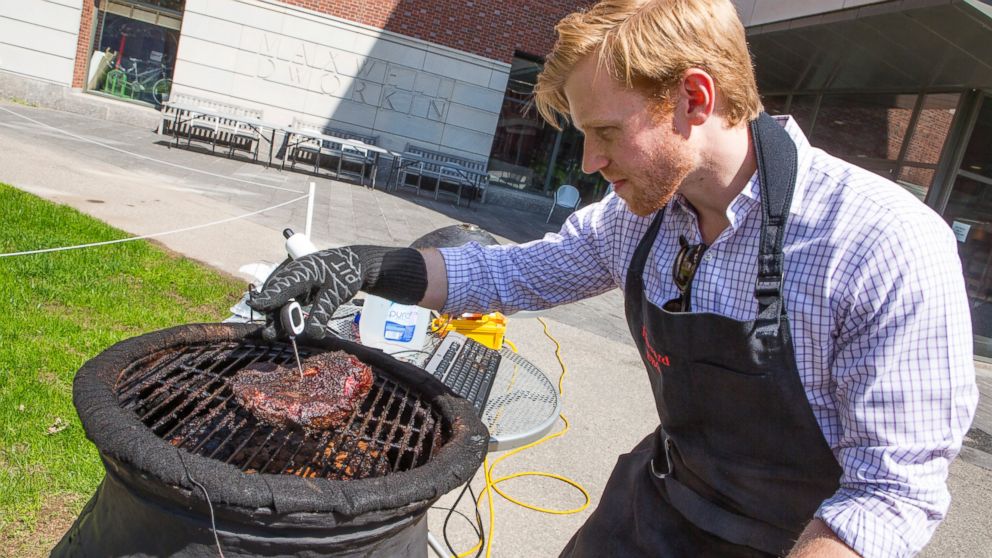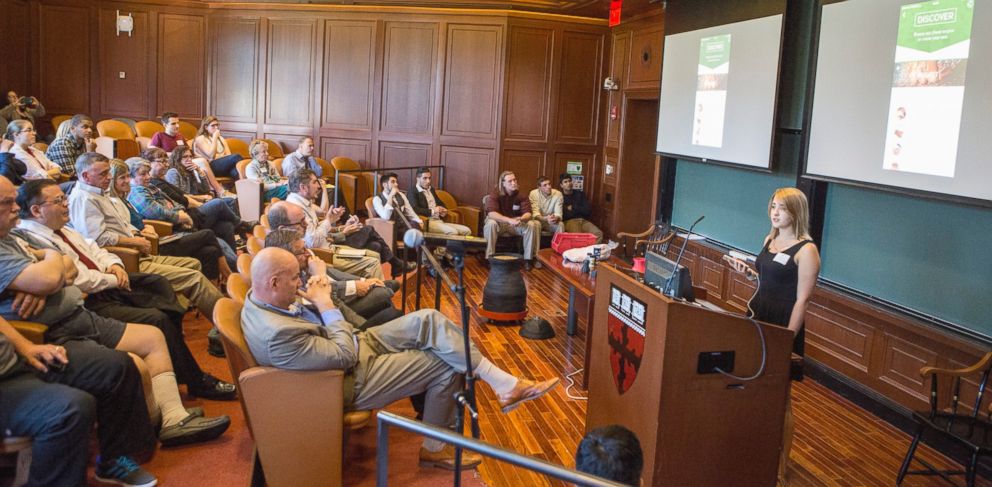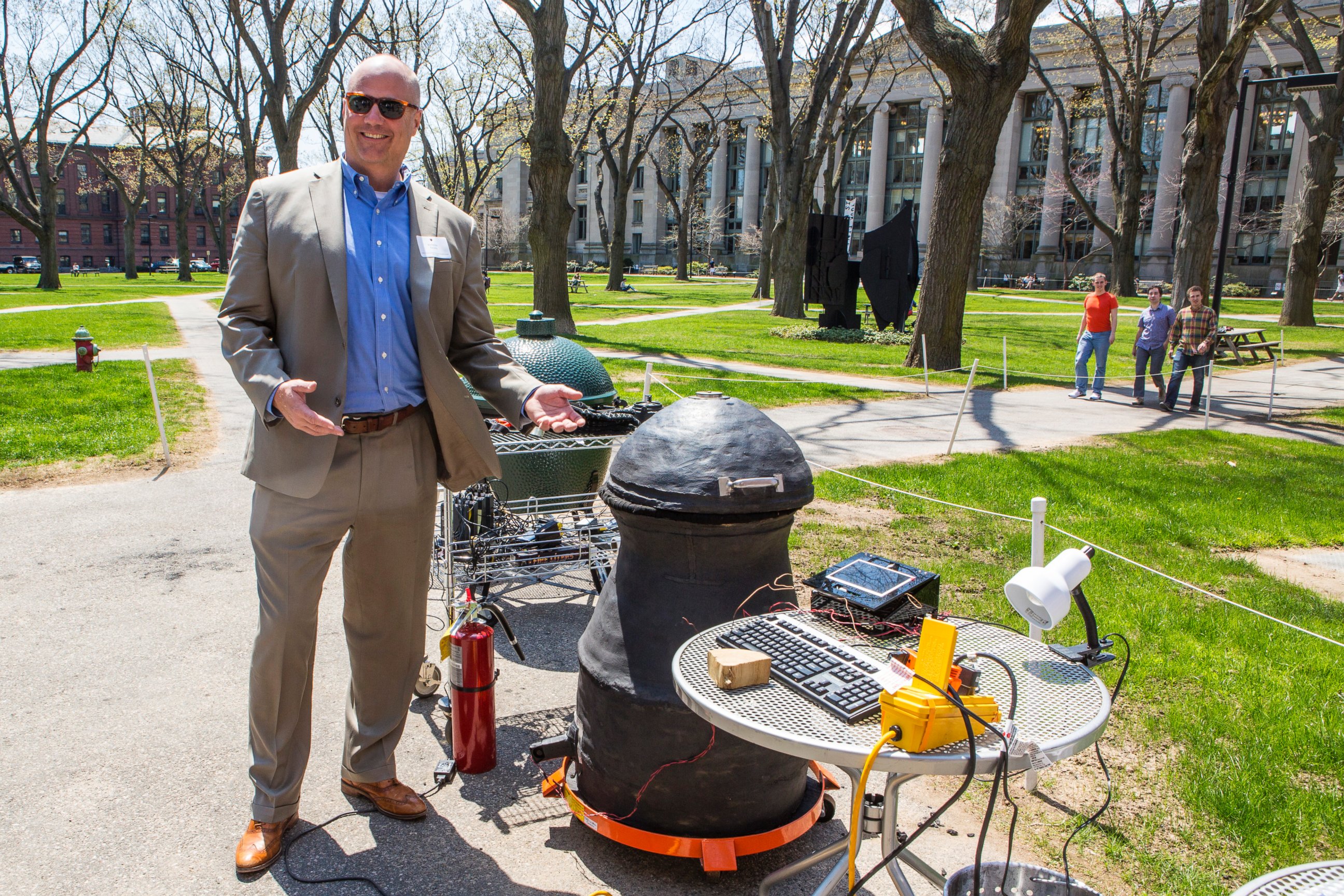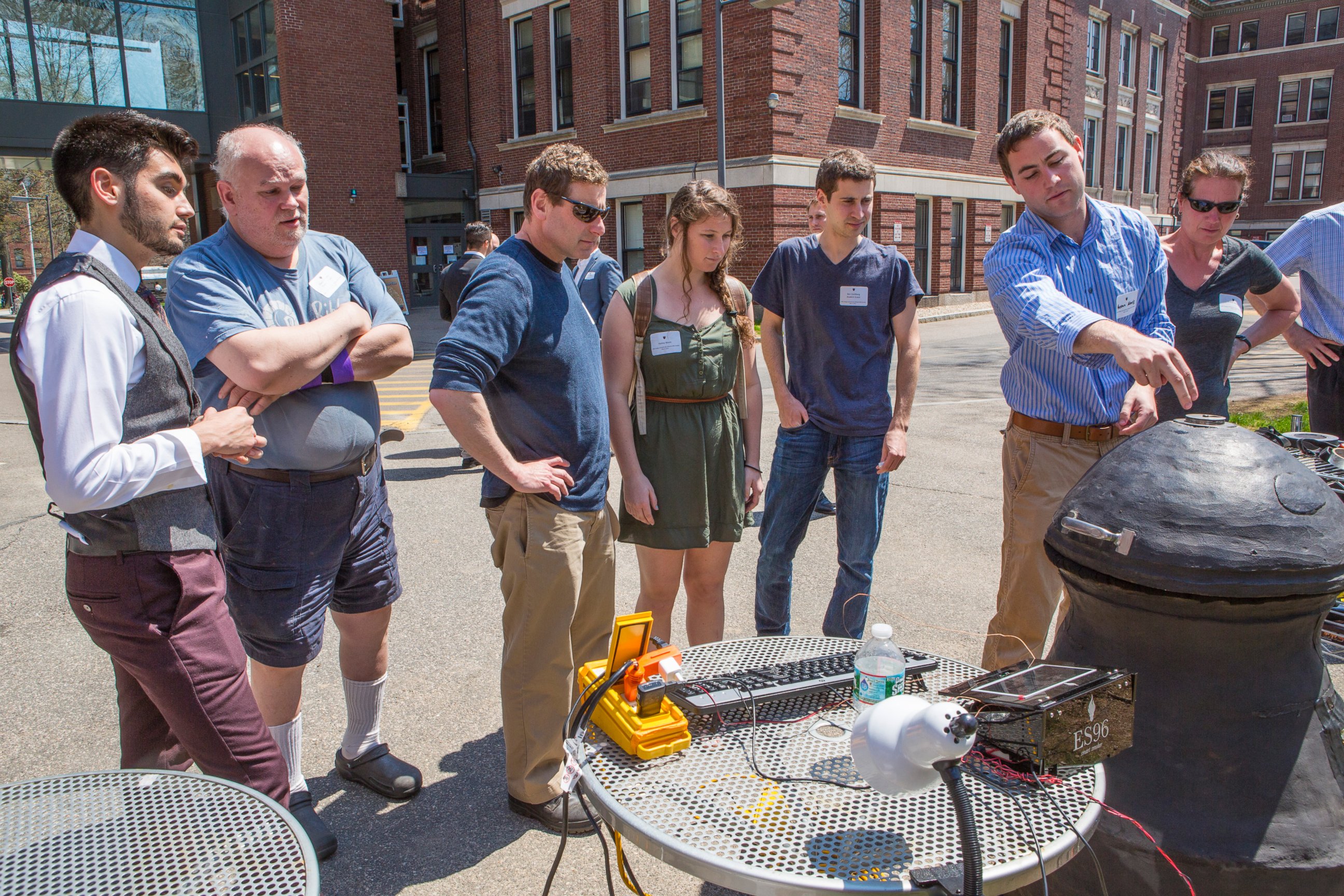Harvard Science Students Tackle How to Make the Perfect Brisket
Students were tasked with building a smoker that produces perfect brisket.

— -- Barbecue is a cuisine deeply rooted in tradition, with many pitmasters and chefs doing very little to change the recipes handed down to them for generations. Kit Parker, for one, never understood that, though.
The Harvard engineering professor was eating barbecue one day when he realized that science could be applied to this tradition to improve it in respectful ways.
"I saw all these smokers that were the oddest contraptions -- variations on high-tech trash cans -- so I thought, 'Hey, you know, we still don’t really understand the fundamental laws of what it is to smoke meat,’” Parker told ABC News. “I love the projects where you take an art form and apply science.”
So Parker got to work developing a challenge for his class’ semester-long project: to build a smoker that can produce perfect brisket every time. He collaborated with Williams-Sonoma to add a commercial element to the project, plus the brand provided design specifications and as much brisket as the class needed (which came in handy as right when the project started, the world brisket shortage was announced).
The students started by learning how to smoke and studying the patents of the big green egg, a popular home barbecue. The class focused on beef brisket specifically because of its challenges.
“Pitmasters from Texas to Manhattan said brisket is the hardest problem in barbecue because it’s two parts of meat: the flat and the point,” Parker explained. “The point is marbled with quite a bit of fat. When brisket is dry it’s usually the flat because it cooks faster than the point, so I had spent a lot of time researching this and going through scientific data on this.”
Parker, who was previously in the military, brought in guest lecturers to talk about various elements of smoking – everyone from pitmasters to CEOs of technology companies.

“We brought a whole range of people. One guy talked about thermal imaging. We used the same kind of thermal imaging when I was looking for Taliban in Afghanistan,” he said. “The guy who invented thermometers that you put on baby’s forehead came one time for 10 hours while we smoked.”
The class even went to the Harvard ceramics center to learn how to play with clay and build the 20-pound smoker. Finally, it was time to test the smoker.
“This winter was the worst in history. The snow was unbelievable. We’d get 20-something inches of snow during the course of a smoke,” Parker recalled. “I told the students, ‘If you want to stand there in the snow all day, go ahead, but if not you better develop an app to monitor it.”
So that’s exactly what the students did. The app, completely accessible on your phone, manages fans inside the smoker to control air flow, connects to social media so you and friends can see the progress of the brisket and monitors temperature inside.
“We call the Harvard smoker the ‘smart smoker,’” he said. “The big key to the texture of barbecue is temperature control. We used ceramics in the design of the smoker, computer simulations on how to burn the wood with ripe mesquite chips and the computer-controlled fans, so we nailed the texture.”

And Parker would know. In order to be able to grade the final outcome, Parker and his teaching fellow Peyton Nesmith got certified as barbecue judges from the Kansas City Barbecue League. Parker and Nesmith judged the brisket on texture, appearance and taste – the last criteria of which is the most subjective.
"He and I would both rate the taste and texture and then go back and take a look at computer data, temperatures we took, how long we cooked it, how much charcoal we used, how much wood we put in, measurements on the smoke molecules, measurements on the meat on how much moisture we lost,” Parker explained. “We tried to correlate this big quantitative science data to the very qualitative and subjective taste score we used to judge this.”
On the day of the final exam, Parker and his class smoked their final briskets and threw a big party after. Out of a possible highest score of nine, Parker gave his students a nine.
“One of the pitmasters at the local barbecue joint said, ‘I haven’t had barbecue this good in a year.’ And he’s a competitor. I think everyone was blown away,” Parker said. “It was a blast, but it was exhausting. The students worked 40 to 50 hours a week on one class. We had varsity soccer and football players, three vocalists who would go do concerts and then come back to the smoking.”

The hard work paid off, though – according to Parker, Williams-Sonoma is thinking about starting a product line.
“We’re working with Williams-Sonoma to get his thing on the market. I think we got the right thing and now it’s time to commercialize it,” he said.




